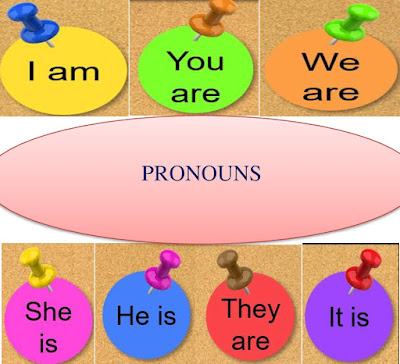Lesson Planning of Pronouns Subject English Grade 5th Students` Learning Outcomes

Lesson Planning of Pronouns Subject English Grade 5 th Students` Learning Outcomes What are the Pronouns? Identify and use pronouns in sentences. Information for Teachers Pronouns are words that take the place of nouns (common and proper) Personal pronouns are used in place of a common or proper noun. Example: I, me, you, he, she, him, her, it, they, and them. In English, different pronouns are used for masculine and feminine pronouns. Pronouns used for Masculine nouns are: he, him, for Feminine: she, her, and for neuter : ‘it’. Different pronouns are used in place of singular and plural pronouns: e.g. I, me, he, she, him, her, it for singular nouns and we, us, they, and them, for plural nouns. While teaching the lesson, the teacher should also consult the textbook at all the steps where it is required. Remember to encourage the students when they give the right answer. Gently correct them by repeating the correct answer if they are wrong. Involve the students in solv
